Exploring Compression Socks for Paraplegic + Quadriplegic Needs
People who have suffered spinal cord injuries, like physical trauma from a car accident, can find themselves with impaired mobility or full paralysis. These cases of paraplegia or quadriplegia call for more support of the circulatory system, which is greatly impacted by the lack of motion and gravity. To avoid blood clots, deep vein thrombosis, swelling, and other problems, wearing compression socks is an easy at-home solution that offers a multitude of health benefits.
Read on to learn what role compression socks can play for paraplegic and quadriplegic patients, why they are useful, and how to make the best choice for you.
Why Do Paraplegics and Quadriplegics Need Compression Socks?
People who suffer from paraplegia or quadriplegia experience impaired mobility (either in the lower limbs or, in the case of quadriplegia, affecting parts of the body from the neck down). Scientific studies found that spinal cord injuries (SCI) affect blood circulation, which can lead to complications like edema, fluid retention, or deep vein thrombosis (DVT). Graduated compression socks or tights help reduce inflammation, bring down swelling, and prevent further circulatory problems during periods of reduced motion.
A 2012 study found that wearing graduated compression stockings helped enhance sympathetic function for paraplegics, regardless of the level of their injury. This means that compression stockings or socks help paraplegics regulate their blood pressure better. Specifically, the garments were found to help prevent orthostatic hypotension or post-exercise hypotension. Physical therapists also recommend compression stockings or tights to patients that are in rehabilitation, as compression socks or stockings help improve peripheral circulation while providing much-needed support to the joints and muscles.
Benefits of Compression Socks for Paraplegics and Quadriplegics
It is well documented that compression socks, especially the graduated compression socks, boost peripheral circulation and help prevent circulatory problems, particularly in the lower limbs. SCIs cause patients to be immobile or have severely impaired and/or reduced mobility. Boosting their blood flow keeps them safe from venous insufficiency and other complications, while also supporting them during rehab and physical therapy.
Improving Circulation
Through the therapeutic pressure they apply onto the limbs, graduated compression socks stimulate upwards blood flow from the feet up to the heart. The fact that they are tighter at the periphery and gradually loosen towards the knee makes them extremely supportive for SCI patients. Medical research found that wearing compression socks improves exercise recovery in paraplegics and quadriplegics, which allows them to engage in beneficial physical activity (as directed by a doctor).
During periods of no or reduced mobility, graduated compression socks prevent blood from pooling around the ankles or creating blood clots. Unlike TED hose, our VIM & VIGR stylish compression socks also add a pop of color to your outfits and can brighten up any setting, to help lift a patient’s spirits as well! Additionally, they come in a range of pressure levels up to medical grade 30-40 mmHg, suitable for any medical condition.

Boost peripheral blood flow in compression socks for SCI patients.
Prevention of DVT
Another benefit of wearing compression socks as a paraplegic or quadriplegic is their documented role in preventing deep vein thrombosis. DVT is often caused by a blood clot forming in one or more deep veins in the legs. Bed-ridden patients and those with reduced mobility are at high risk of developing DVT, which is why they will often be prescribed compression socks by their doctors. It’s also very common to develop DVT after a surgery or a trauma. Medical research has found that both knee-high compression socks and full-length compression stockings can reduce the risk of DVT.
Through the boost in blood flow that compression socks provide, they reduce the risk of blood clots from forming. This ensures that blood flows easily throughout the body. Compression socks also provide a light massage to the lower limbs, which helps prevent fluid retention and swelling.
Reduced Swelling and Fluid Retention
When we don’t move for extended periods of time, we often notice our legs and feet swelling (especially on long flights!). Quadriplegic or paraplegic patients are immobile or have reduced mobility, which means they are at higher risk of developing swelling or blood clots. Compression socks are often prescribed to combat edema (when fluid is leaked out of small blood vessels and leads to swelling) or lymphedema (swelling caused by a build-up of lymph fluid).
The Northwest Regional Spinal Cord Injury System at the University of Washington explains there is a strong link between SCIs and edema. So, wearing graduate compression socks can be a huge help in reducing edema for patients with SCI. Further assisted movement of the limbs while wearing compression socks may better reduce edema, per one scientific study.

Prevent swelling during SCI rehab thanks to graduated compression socks.
Decreased Risk of Varicose Veins
Just like with blood clots and DVT, impaired mobility that causes prolonged periods of lying down or not moving puts pressure on the circulatory system. This can lead to varicose veins. These are enlarged blood vessels that can be painful and uncomfortable. Varicose veins are caused by weakened valves. This can cause blood to pool in the veins or even leak out of the veins instead of continuing to flow through the legs and the rest of your body.
Wearing compression socks protects the lower extremities of paraplegia and quadriplegia patients. They provide support and improve peripheral blood flow. This can reduce the risk of varicose veins in these patients, improving overall physical comfort.
Improved Skin Health
Compression socks have been found to help reduce swelling and prevent cellulitis for people suffering from lymphedema, which often occur in paraplegics and quadriplegics. Yale Medicine advises that compression stockings are also beneficial in treating chronic venous insufficiency and its associated changes in skin color.
Overall, it’s important not to put on compression socks on top of an open wound. Further, compression socks can be used to prevent skin ulcers and discoloration by reducing swelling or edema.
Choosing Compression Socks for Paraplegics and Quadriplegics
Most paraplegics and quadriplegics need circulatory system support during periods of extended immobility. Compression socks are effective in these cases by preventing circulatory problems, swelling, discomfort, and pain. Here are the top things to consider when picking out a pair.
Graduated Compression vs Regular Compression
Many types of compression socks are “regular” - i.e., they apply a uniform amount of pressure to the limbs. This still offers benefits in boosting blood flow and supporting the lower legs, but it doesn’t have the bonus of stimulating upwards circulation, from the feet towards the heart. This is what graduated compression is all about.
By being tighter at the end and gradually releasing pressure as they climb up the lower legs, graduated compression socks stimulate blood flow away from the lower legs and back towards the heart. This is an essential benefit for paraplegia and quadriplegia patients who are unable to move around and can experience swelling caused by blood or lymph fluid pooling around the ankles. Our Vim & Vigr graduated compression socks come in a wide range of compression levels, colors, and styles. So, there’s plenty of choice to bring a spot of brightness in an SCI patient’s wardrobe, while also giving them enhanced leg comfort and blood flow benefits.
Users with limited mobility may have also heard of TED hose. TED hose generally provide lighter pressure (less than 20 mmHg), which is good for mobile patients recovering from surgery (or for those able to get up and move around significantly more than an SCI patient). However, to prevent DVT in paraplegics and quadriplegics, higher compression pressures from graduated compression socks may be more effective.

Discover a wide range of supportive graduated compression socks for SCI patients.
Choosing the Right Compression Level
Compression socks come in a variety of pressure levels, giving everyone from dancers and runners to completely immobile patients improvements in blood flow and lower limb support. Our entry-level sock pressures are measured at 15-20 mmHg, which is better suited for those who are able to move freely or doing rehab and physical therapy.
Paraplegic patients with only partial loss of leg function or mobility can benefit from 20-30 mmHg compression socks, which are firm but effective in supporting the lower limbs. However, the medical grade 30-40 mmHg is more appropriate, especially during the beginning of a rehabilitation program. SCI patients should always discuss this first with their doctor, who will advise on the best compression level to use.
Finding the Right Fit
One essential aspect in choosing the best compression socks for quadriplegics and paraplegics is the sizing. These socks need to be tight to boost blood flow and offer adequate support. But they can’t cut off circulation or create bruises and pain, either!
Our advice is to use the sizing guide on our website, starting by measuring the circumference of the patient’s calf muscle. Then, map that against the sizing table and find the best match. Always give the patient some time to get used to the feeling of compression if they have any feeling in the lower limbs. In all cases, check the skin after wear, and ensure there are no patches of discoloration or any signs that the socks are causing skin irritation. If any of these occur, go up in size. Similarly, if you can see that the socks are quite loose or roll down the lower leg when the patient is sitting, then they are too big for them. You will need to go down in size for best results. Again, if you notice any skin issues, consult your doctor.
Open-Toe vs Closed Toe Compression Socks
If an SCI patient needs access to their toes, for surgical or other reasons, open-toe compression socks. can provide a boost in blood flow. Vim & Vigr open-toe socks are also graduated, varying the pressure from ankle to calf to boost upwards blood flow.

Discover VIM & VIGR open-toe compression socks.
Fabric and Material Options
Fabric is also an important consideration for compression socks. Depending on the environment a patient finds themselves in, they will need more breathable socks to avoid sweat and irritation, or perhaps warm socks to keep feet from going numb from poor circulation or colder environments.
We offer different materials depending on your requirements:
- Cotton - a classic choice for most conditions and for everyday wear, our 200 needle-count cotton socks are super comfortable and breathable.
- Nylon - strong and flexible, an excellent choice to wear during rehabilitation exercises.
- Moisture-wick nylon - extra breathable to draw sweat and moisture off the skin.
- Merino wool - excellent for thermoregulation in all conditions, while also antibacterial to prevent any infections or irritation.
Tips for Putting On and Taking Off Compression Socks as a Paraplegic or Quadriplegic
If you care for someone with paraplegia or quadriplegia, you will know how important it is to put on and take off their socks with minimal discomfort. If you have limited mobility and you want to benefit from compression therapy, you may be concerned about the ease of putting on these restrictive garments.
First off, compression socks are not meant to restrict movement; they simply add therapeutic pressure to the limbs. Our VIM & VIGR socks are easy to wear and provide benefits to paraplegic or quadriplegic individuals once they’re on. To find the easiest way to put compression socks on, follow our step-by-step guide for putting them on. Start by nestling your heel and toes into the extremities of the sock and then gently rolling it up over the lower leg. This ensures that there is no bunching or folding. And it goes the same for taking them off, rolling them down to the ankles and then removing them as you would a regular non-compression sock.
To make it easier to slip them on, consider putting on compression socks first thing in the morning before the legs swell up. Wear latex gloves to ensure your hands don’t slip and to protect the fabric from jewelry or long nails.
Wearing graduated compression socks as a paraplegic or quadriplegic patient can reduce the risk of complications related to blood flow, such as blood clots, edema, and DVT. Graduated compression socks are supportive of your muscles and joints when doing any rehabilitation and physical therapy, and they are comfortable and easy to wear all day long.
Browse our range of high-quality compression socks to find a pair to support your circulation after a spinal cord injury, and consult with a medical provider if you have further questions around the benefits of compression.
References
Mautes, A. E., Weinzierl, M. R., Donovan, F., & Noble, L. J. (2000). Vascular events after spinal cord injury: contribution to secondary pathogenesis. Physical therapy, 80(7), 673–687. Read it here.
Moñux, G., Serna-Soto, M., Plá-Sanchez, F., Zamorano-León, J. J., Segura, A., Rial, R., Freixer, G., Zekri-Nechar, K., Hugo-Martínez, C., Serrano, J., & López-Farré, A. (2021). Compression stockings attenuate the expression of proteins associated with vascular damage in human varicose veins. Journal of vascular surgery. Venous and lymphatic disorders, 9(2), 428–434. Read it here.
Rimaud, D., Calmels, P., Pichot, V., Bethoux, F., & Roche, F. (2012). Effects of compression stockings on sympathetic activity and heart rate variability in individuals with spinal cord injury. The journal of spinal cord medicine, 35(2), 81–88. Read it here.
Rimaud, D., Calmels, P., Roche, F., Mongold, J. J., Trudeau, F., & Devillard, X. (2007). Effects of graduated compression stockings on cardiovascular and metabolic responses to exercise and exercise recovery in persons with spinal cord injury. Archives of physical medicine and rehabilitation, 88(6), 703–709. Read it here.
Vaile, J., Stefanovic, B., & Askew, C. D. (2016). Effect of lower limb compression on blood flow and performance in elite wheelchair rugby athletes. The journal of spinal cord medicine, 39(2), 206–211. Read it here.
Charles, T., Mackintosh, D., Healy, B., Perrin, K., Weatherall, M., & Beasley, R. (2011). Merino wool graduated compression stocking increases lower limb venous blood flow: a randomized controlled trial. Advances in therapy, 28(3), 227–237. Read it here.
Sajid, M. S., Tai, N. R., Goli, G., Morris, R. W., Baker, D. M., & Hamilton, G. (2006). Knee versus thigh length graduated compression stockings for prevention of deep venous thrombosis: a systematic review. European journal of vascular and endovascular surgery : the official journal of the European Society for Vascular Surgery, 32(6), 730–736. Read it here.
Song, S. (2015). Swollen Feet and Legs: Edema in SCI. Northwest Regional Spinal Cord Injury System: Spinal Cord Injury Update. Vol 24(1). Read it here.
Barufi, S., Pereira de Godoy, H. J., Pereira de Godoy, J. M., & Guerreiro Godoy, M. F. (2021). Exercising and Compression Mechanism in the Treatment of Lymphedema. Cureus, 13(7), e16121. Read it here.
Katella, K. (2024). Blood clots, Varicose Veins, and Sore Legs: Can Compression Socks Help? Yale Medicine: Doctors & Advice. Read it here.
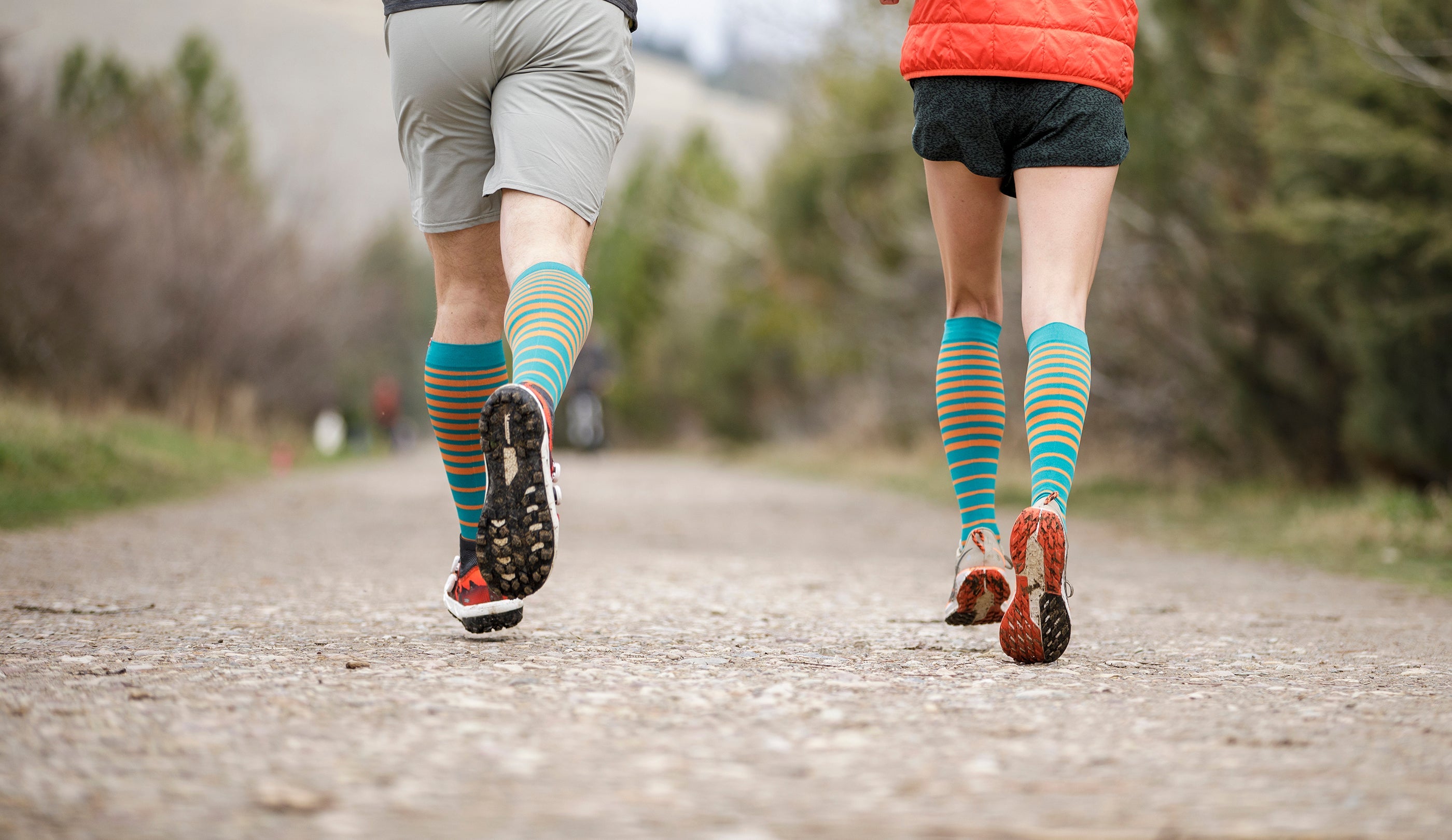
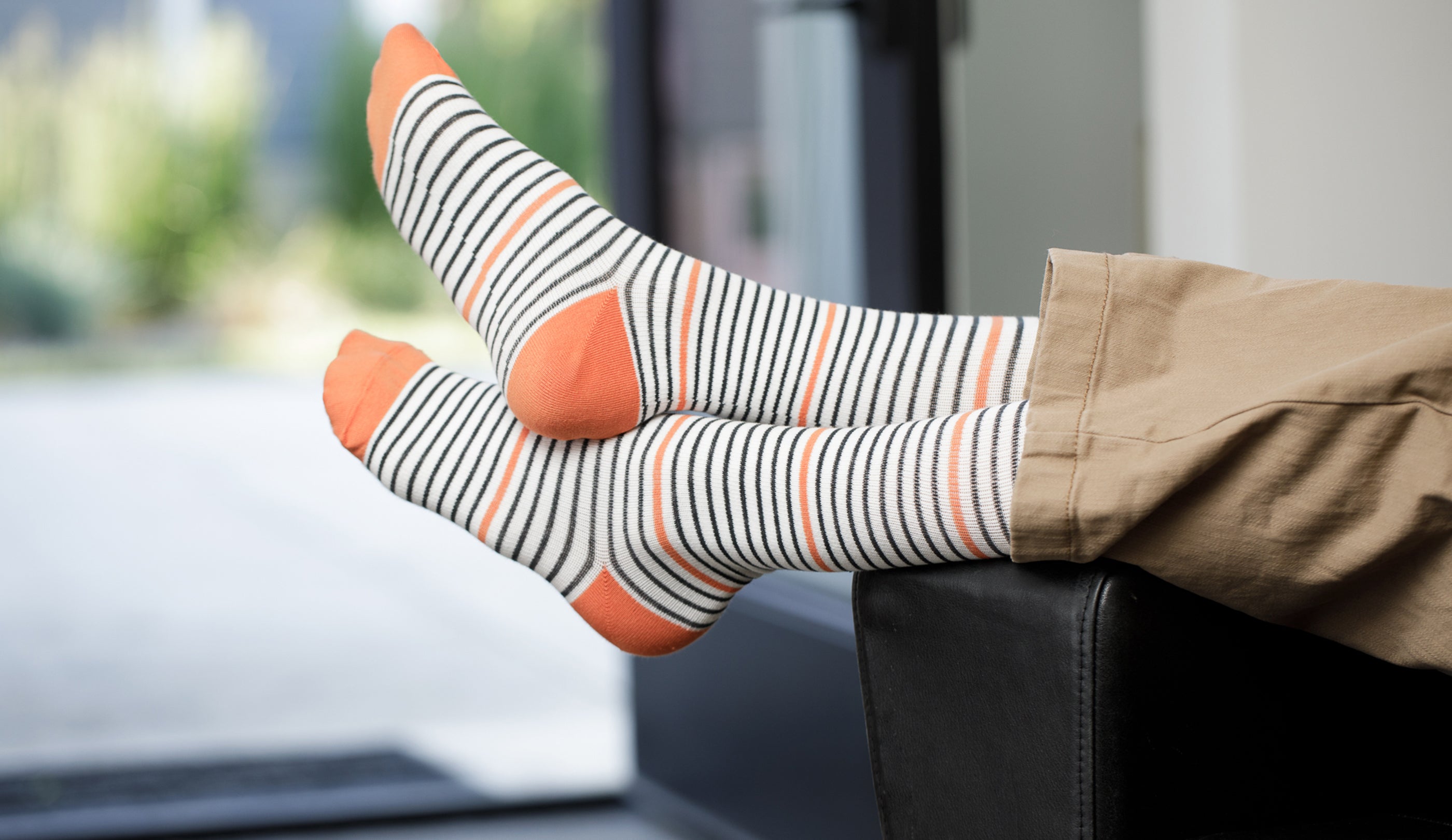

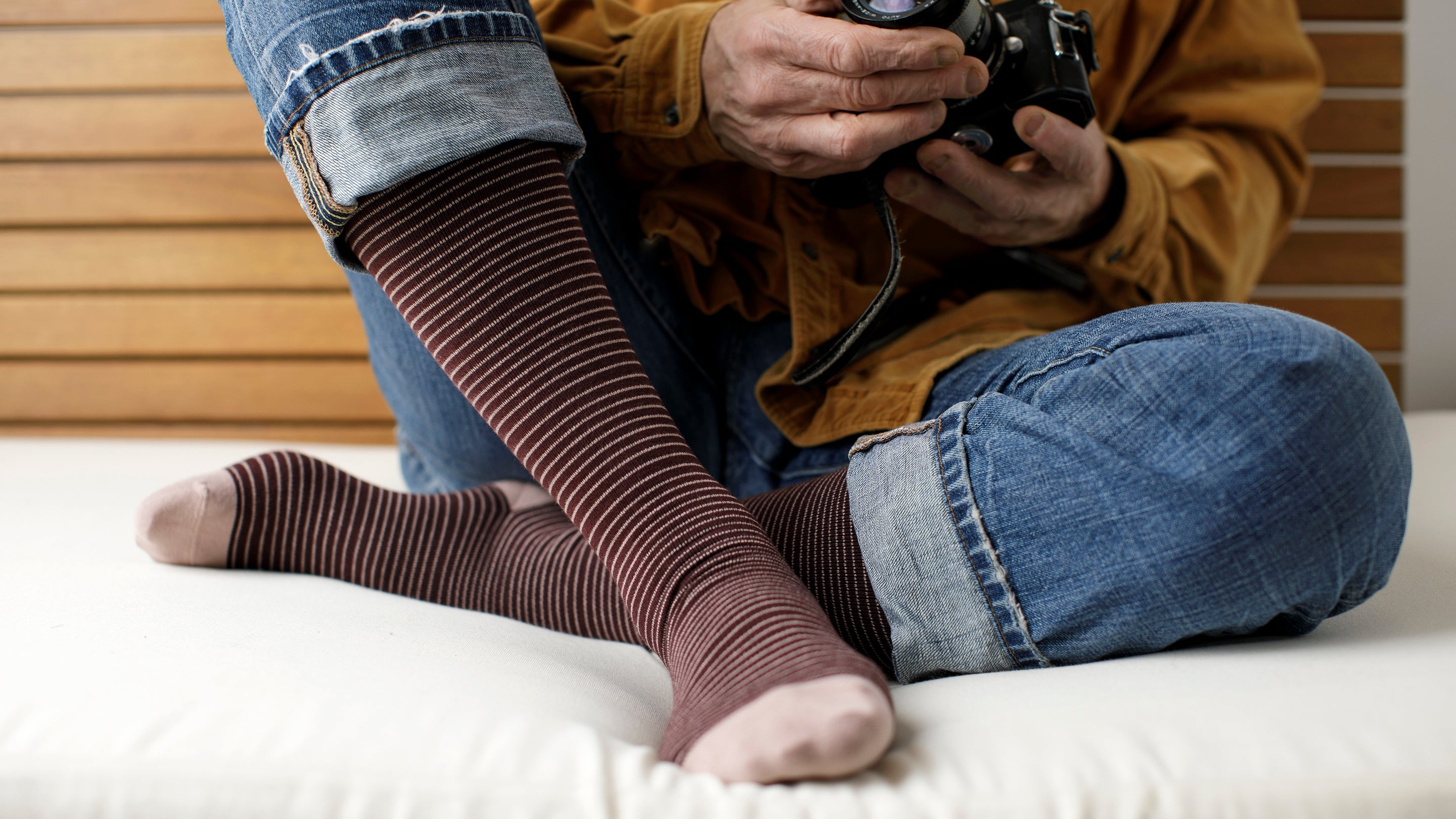




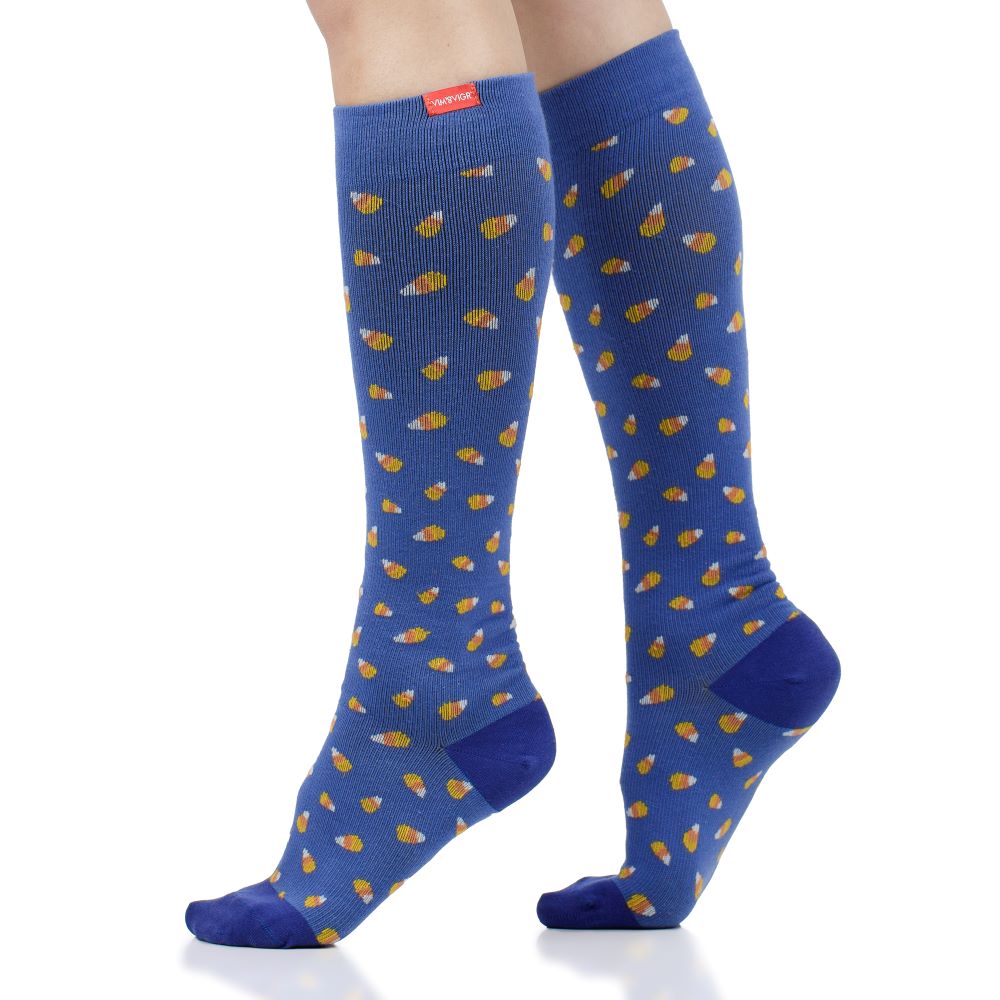

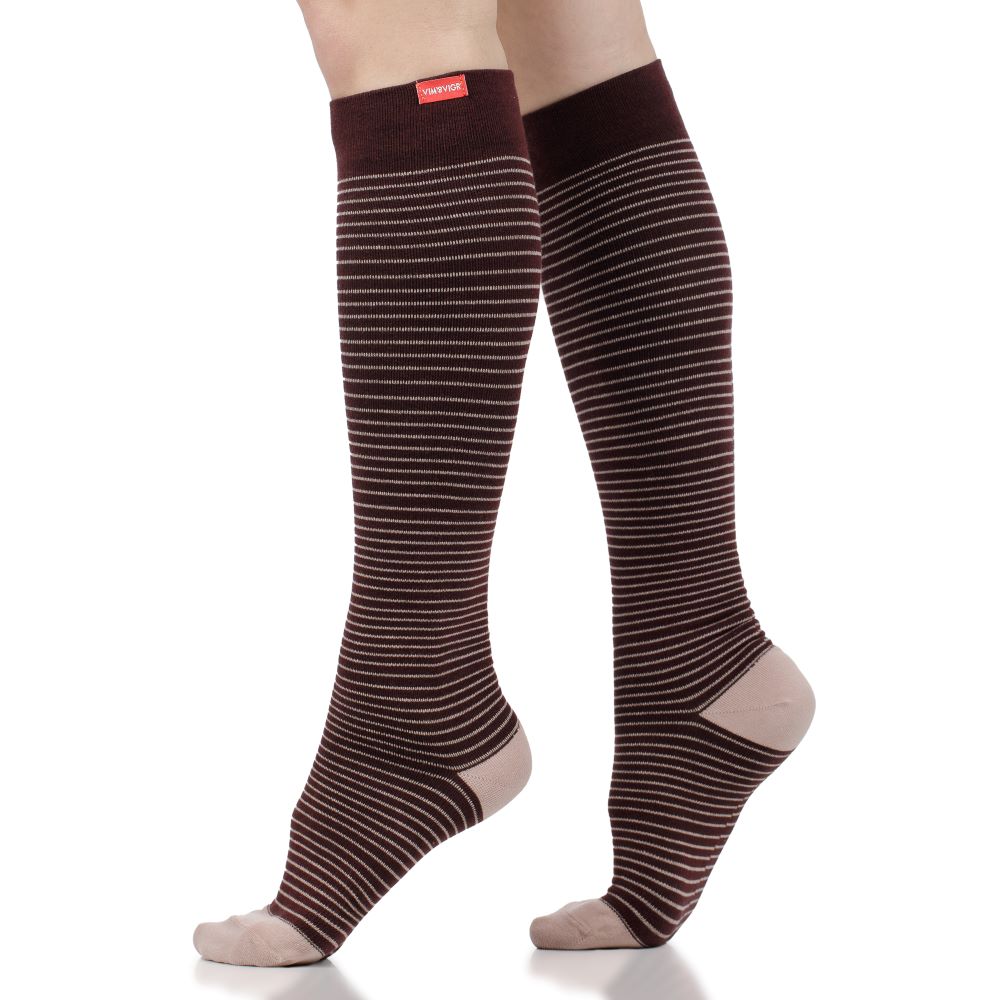
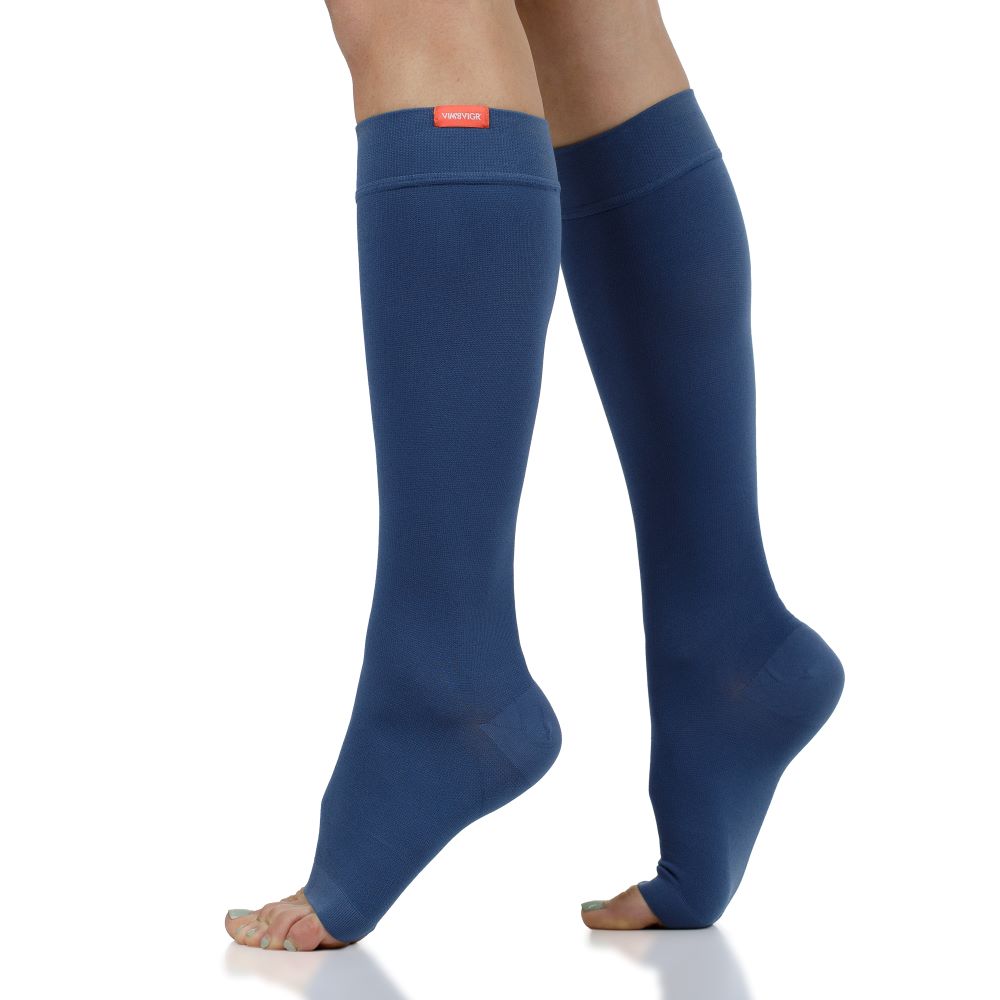
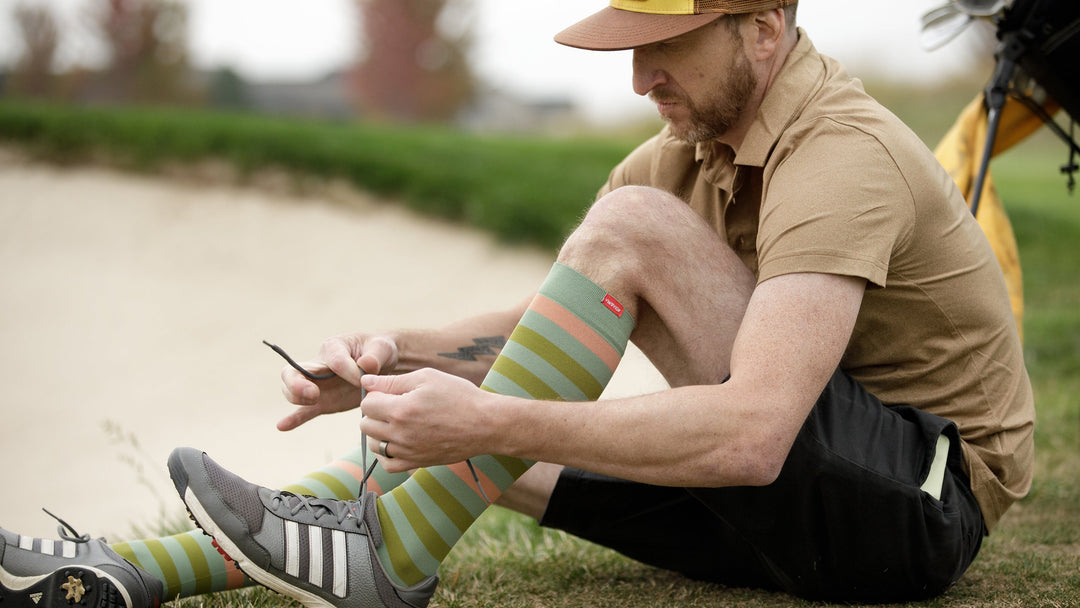

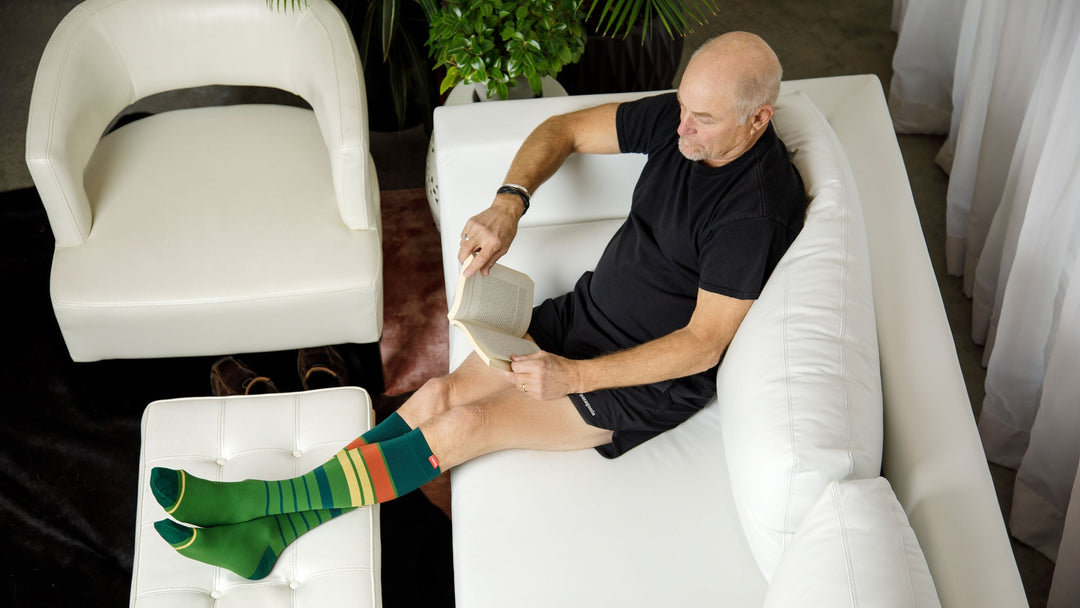



Leave a comment